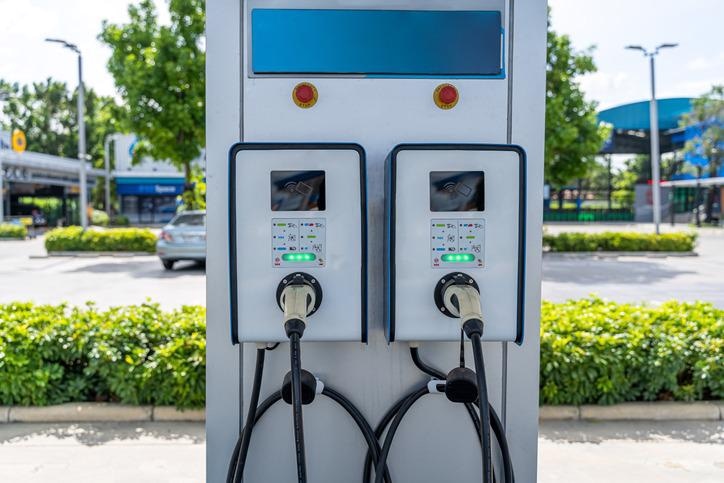Most car or truck drivers would likely say the ability to safely get from point A to point B is the most important function of their vehicle. No vehicle owner wants to discover that their vehicle is not ready when they are.

Image Credit: Amphenol Advanced Sensors
Although electric vehicles (EV) utilize a different fuel source than their traditional combustion engine counterparts, an owner’s expectation of their vehicle, or fleet of vehicles, is still the same: for immediate, on-demand transportation.
With the fast growth of EVs on the market already underway, keeping them fully charged or fueled is a key concern. There are still concerns that electric vehicles will run out of power at the worst possible time, stranded miles away from a charging station, despite advances in battery technology.
In addition, gas-powered vehicle owners are accustomed to refueling taking just a few minutes and will wonder how charging an electric vehicle could ever approach that convenience and speed.
Fast-charging EV technology meets these concerns when paired with longer-lasting power banks, making electric vehicles a viable alternative to those powered by fossil fuels.
Yet, fast-charging technology and an accompanying infrastructure of charging stations are not sufficient to help potential EV consumers overcome worries about time lost re-energizing.
Actual results matter to those looking for a seamless transition to driving an electric vehicle. Electric vehicle sensors are required for making charging almost as fast as fueling up at a gas station.
Fast Charging and its Potential Impacts on EV Battery Health
In the early days of electric vehicle development, new fast-charging technology was partly responsible for the ongoing electrification of transportation. Fast-charging cannot be utilized without proper monitoring systems, but they do make the conversion to electric vehicles more practical.
Why?
Heat is the main byproduct of fast charging, particularly when converting electrical current from AC to DC, and heat is an electric vehicle battery pack’s worst enemy.
Any size of EV battery is designed to perform within a range of 15-45 °C. Exposure to high temperatures outside of that range has a harmful influence on an EV battery’s health and affects:
- Safety: Overheated EV battery cells start to decompose, triggering thermal runaway, a chain reaction that could start a fire.
- Ability to hold a charge: Overheating can hamper a battery’s ability to stay charged severely, and through the formation of dendrites very cold ambient temperatures can also harm batteries when charging.
- Useful life: From AAA to those powering an airplane, rechargeable batteries of any size are designed to last a few thousand charge cycles. Damage from excessive heat can decrease a battery’s lifespan by a number of years.
- Charging capacity: Exposure to high temperatures decreases an EV battery pack’s capacity. There is less to charge when less lithium is present.
Three Places Electric Vehicle Sensors are Necessary to Monitor Fast Charging
Making sure that high-speed EV charging is efficient and safe starts and stops with sensor technology. Fast charging needs fast-response sensors, chiefly vehicle temperature sensors.
The risk of heat damage to an EV’s components increases drastically without real-time monitoring that triggers the systems to maintain ideal temperatures. Temperature sensors are a must for fast charging at three places in an electric vehicle:
- Charge handle connection point
- Thermal management system
- Inside the battery pack
1. Charge Handle Connection Point
There are two places at the point of connection where temperature sensors are a must: the charging handle and the charging port.
Many electrons need to pass from the EV service equipment to the vehicle battery quickly in order to rapidly charge, and this high current produces heat. High temperatures within the charging port may indicate that there is a poor connection between the EV’s contacts and the charging handle.
A poor connection from an efficiency standpoint means the vehicle is not charging as fast as it should. Furthermore, high temperatures from an EV quick charger’s connector are also an indication that the charger is overtaxed by the power demand or that it is beginning to malfunction.
2. The Thermal Management System
Overheating is a signal that suggests an EV’s thermal management system is not working as intended and its components are running hot, such as:
- Refrigerants
- Heat exchangers
- Cooling plates
- Dielectric oils
- Coolant fluids
Excessive temperatures are also an indication that the EV cooling system is being overwhelmed by excessive heat from the parts that they are supposed to be cooling.
3. Inside the Battery Pack
An EV’s battery pack is arguably the worst place for overheating. To preserve its integrity and safety, it must be kept within the range of 15-45 °C. When they are between 45 and 60 °C lithium-ion cells charge well, but they can suffer damage if they are slightly above those temperatures when charging.
The vehicle may go into safe mode and shut down, or worse, begin the process of thermal runaway when in-pack temperatures go beyond that range.
One of the last indicators that something is wrong with the vehicle’s charging or thermal management systems, or the battery itself is malfunctioning, is a battery overheating. Immediate cooling is necessary to maintain the battery’s long-term functionality and safety.
The Future of EV Fast Charging
The development of fast-charging technology is far from over. It takes approximately 30 minutes to re-energize an EV’s battery to 80 % using existing fast-charging technology. Yet, engineers are still working to make fully charging an EV as quick as filling up an ICE vehicle’s empty gas tank - a process that usually takes under 10 minutes.
The demands for ultra-fast electric vehicle charging are not being entirely driven by the desire for convenience. Ground transit companies and those with fleets of large vehicles (buses and semis) are all but demanding ultra-fast charging.
Simply put, larger vehicles have battery packs that are a number of times larger than those utilized in electric cars, and so they take longer to charge. Time spent charging battery packs represents lost income and productivity.
Fast-response sensors which monitor heat throughout an EV are vital for:
- Preventing battery degradation or damage
- Putting vehicles back in service faster
Electric Vehicle Sensors and Fast-Charging Systems: A Necessary Pairing
Though in the history of transportation, electrification is one of the biggest transitions, vehicle owners and operators still have a certain level of expectation for functionality.
As it meets a major concern head-on, fast-charging technology is making this shift possible. Electric vehicle sensors are the unsung hero in making EV charging as uneventful as filling up a gas tank.

This information has been sourced, reviewed and adapted from materials provided by Amphenol Advanced Sensors.
For more information on this source, please visit Amphenol Advanced Sensors.